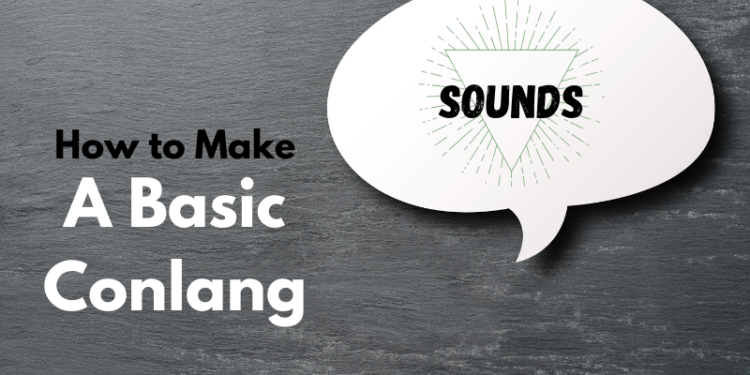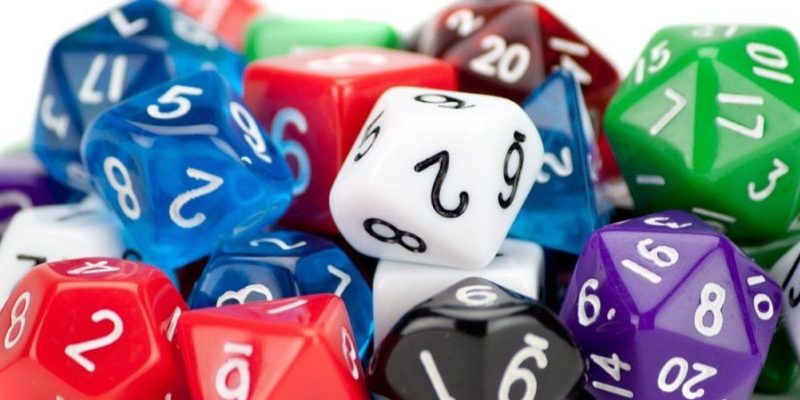How to Make A Basic Conlang, Part 1: Sounds

Creating a conlang, aka constructed language, for your Dungeons & Dragons world can be summarized into three basic steps:
- Choose the sounds
- Decide on the grammar
- Create a lexicon
The sounds of a language and how they work together is called a language’s phonology. The phonology is where a conlang will get the majority of its character. Tolkien’s Elvish was intentionally made to sound beautiful (to Tolkien’s ear) and the Na’vi language in Avatar was made to sound alien (to English speakers primarily). This was done by incorporating lots of lovely open syllables and sonorants like r and l in Elvish, and by adding sounds that are uncommon in European languages to Na’vi.
Whether you are creating a conlang for your world’s dragons or for tortles the sounds you decide to include in the language will do more to convey the flavor of the race than the grammar. This makes it a sensible place to start making a conlang
Choosing the sounds for your language
Whenever I sit down to sketch out a language, my first place to go is Wikipedia. There are articles on the phonologies of thousands of languages there and technical terms are all nicely hyperlinked so you can, for example, quickly understand the difference between a high and low vowel.
What I recommend is to either start with the page on English (or your native language) phonology, or a favorite language you are somewhat familiar with. Don’t bother too much with any technical bits yet, instead, just click on the different sounds and hear what they are like.
Sounds, or phonemes, are written using the International Phonetic Language (IPA), which is designed to be a 1:1 representation of the sounds in a language. Becoming familiar with the IPA can save you a lot of time and give you accuracy when recording your conlang’s IPA.
Sounds are divided into the place of articulation and the method of articulation. A phoneme’s place of articulation is where in the mouth it is made and its method is how it is made. Consider the phonemes /p/ and /m/ (we use // to indicate that the letters within the slashes are IPA).
These two sounds are both made at the same place of articulation, the lips, but their method is different. The /p/ has the lips touch briefly and then release, while the /m/ closes the mouth and opens the nasal passages to resonate the sound.
Play around with the sounds in the IPA chart, seeing how it is to make the different phonemes.
After exploring the inventories of your native and favorite languages, choose the ones that you like the best. There are general “rules” of linguistic probability that dictate what sounds can be in a phonological inventory, but don’t let that stop you from choosing your favorites. You are making a conlang for a fantasy world after all.
Here are some basic guidelines that might help if you get stuck:
- Sound inventories like symmetry. If you have a /p/ you probably have other sounds made with the lips. Don’t just add one sound, add a series of sounds in the same place of articulation.
- Start with your favorite sounds and build around them. Add sounds that complement or contrast with your favorites.
- Write down some random syllables that have the sound that you like and then use that as the basis of your phonology.
Once you have a handle on your phonemes, its time to stick them together.
Phonoaesthetics & Putting Sound Together
It’s here that a conlang really gets its character. How sounds are put together, or phonotactics, can shift the same set of sounds from sounding melodious to harsh.
Syllables are built up of three parts: the Onset, Rhyme, and Coda. Let’s break this down with the word strengths.
- The Onset is the initial sounds (often consonants) that make up the syllable. In our example, this would be str. This can be a cluster, like our example, or just a single consonant, or nothing.
- The Rhyme is the core of the syllable and is generally made up of a vowel or two (or three!). Rhymes can also be made up of consonants that can be sustained, like nasals, fricatives, and laterals. In our example, e is the rhyme.
- The Coda is any sound following the rhyme. Some languages do not allow any coda (like Hawaiian), others allow a lot (like English). In our example, ngths is the coda.
When representing your phonotactics, it’s common to use a C to represent consonants, V for vowels, and sometimes N for nasals, L for laterals, and so on. You can notate your phonotactics like this:
CV(n)
This means a syllable can maximally have one consonant, one vowel, and an optional /n/ as a coda.
Take your time in developing how the sounds fit together and don’t be afraid to revise often. You can look to natural languages for an example or even your favorite conlang.
A 10-Minute Phonology
If you are rushed for time follow these steps for a quick 10-minute phonology:
- Take the standard English phonology
- Roll a d6 and randomly subtract that many sounds from the consonants
- Roll a d6 and do the same for the vowels
- Add any sounds you like that are not present.
- Use this generator, and a CV(C) syllable shape to create some basic words to test the results.
- Tweek until happy or time runs out.
Resources
Here are some resources if you wanted more help with a language or a more advanced overview:
Biblaridion’s Youtube Channel – One of the best conlang YouTubers out there
David Peterson’s Youtube Channel – The channel of the creator of Dothraki and many other TV conlangs
r/conlangs – A great community and tons of resources in the sidebar
An IPA keyboard to make it easy to type that out!
Next week we’ll tackle morphology & grammar! Interested in seeing how to incorporate a conlang into your campaign? I wrote about that last week.



